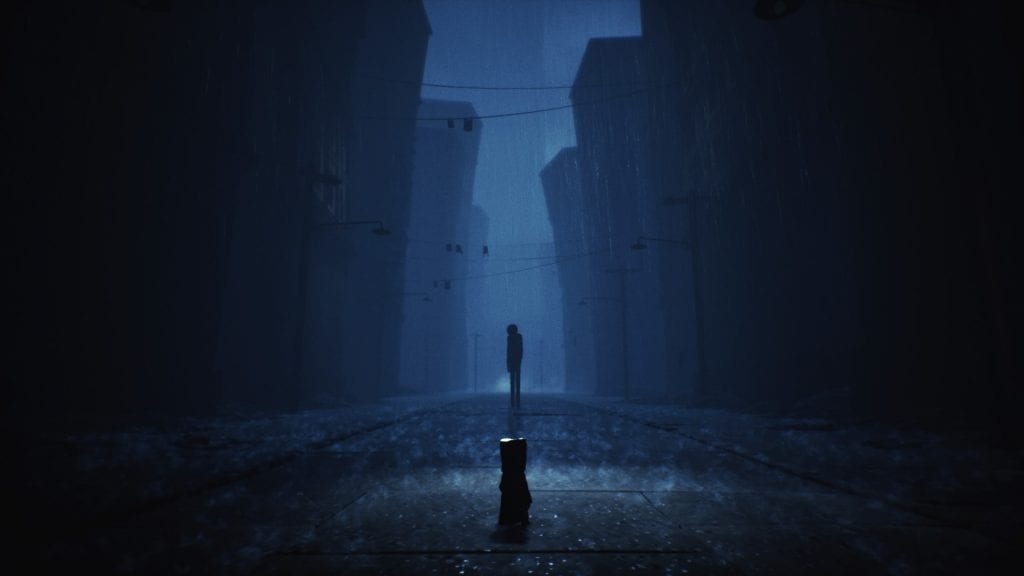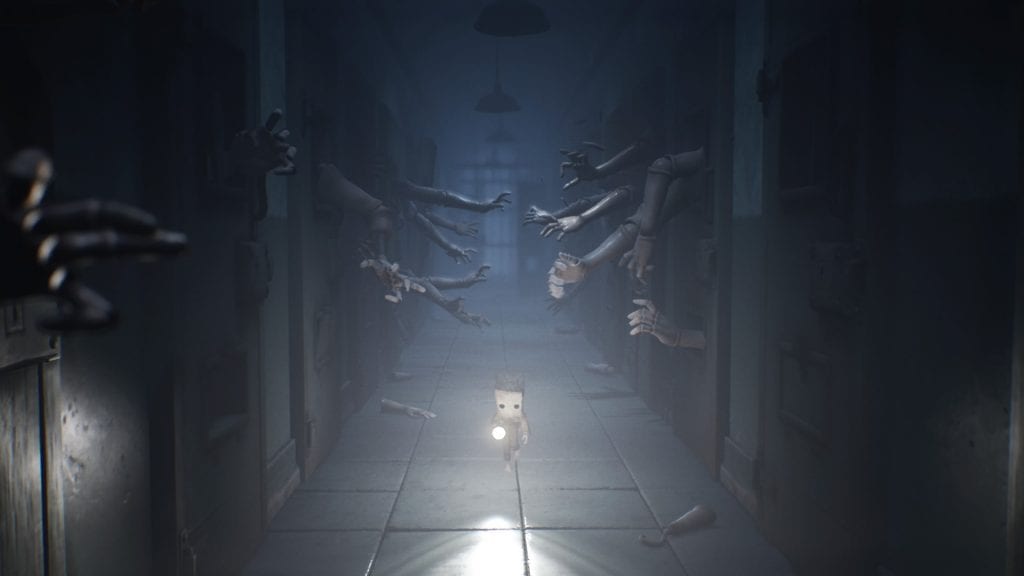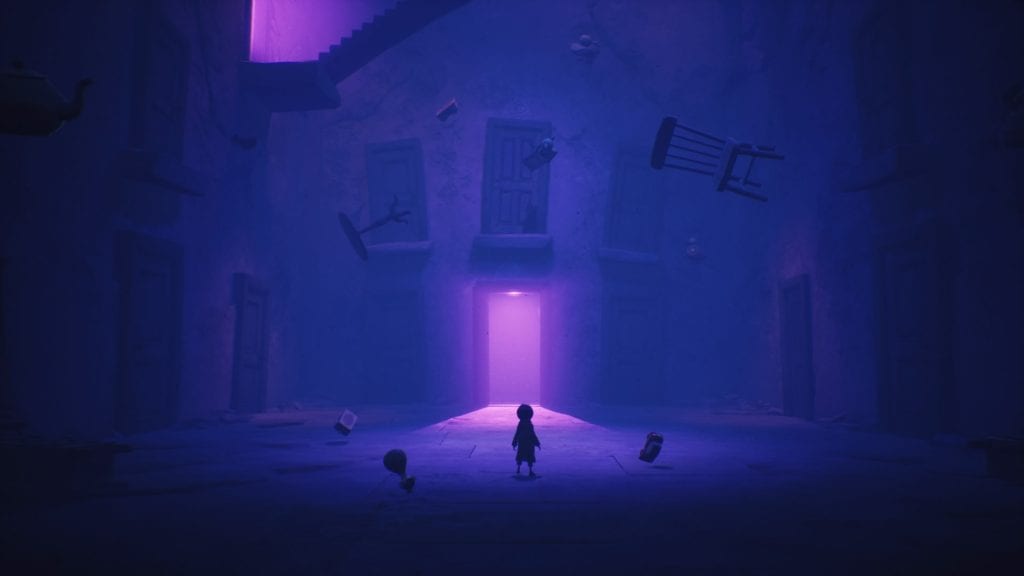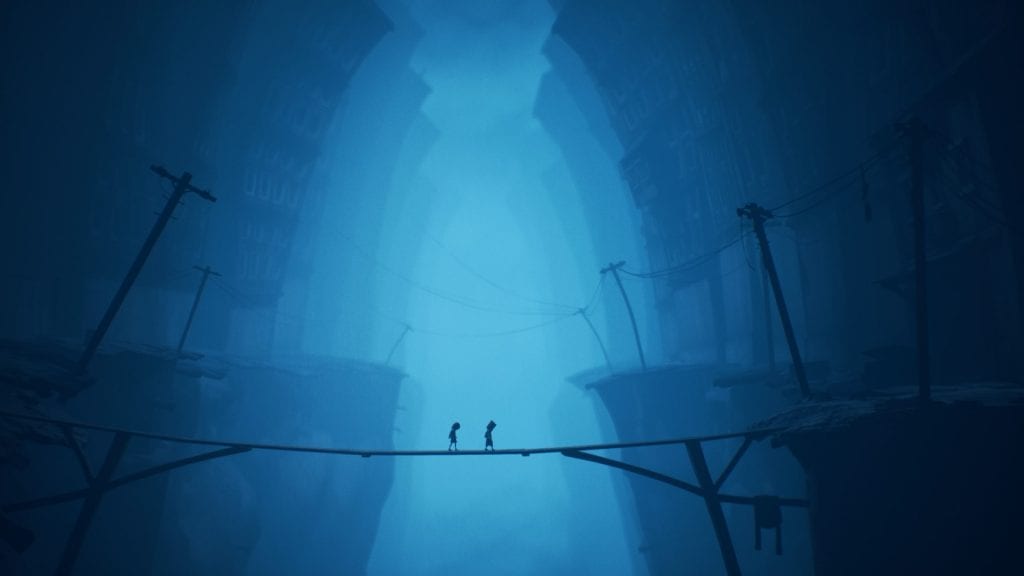Released: February 2021
Rating: T (Blood and Violence)
Disclaimer: Little Nightmares II review code was provided by Bandai Namco for the purposes of this review. That being said, all opinions expressed in this review are wholly my own.
In 2017 Tarsier Studios released Little Nightmares, a simple yet engaging puzzle-platformer that soon shot to fame thanks in part to streamers and the “Let’s Play” YouTube crowd. For a while, nobody could stop talking about Little Nightmares. Its unique blend of Tim Burton-esque charm with a distinct visual style and creepy atmosphere put the game in the same league as titles like Inside and Limbo.
The announcement of a sequel in the works had fan anticipation running high. The first game was far from perfect, but its potential was obvious. If the sequel could truly improve upon the groundwork of the first then that game had the potential to be one of the best of the generation. So, does Little Nightmares II live up to the hype?
Well, after finishing the game last week and letting my thoughts ruminate for a bit, I can wholeheartedly say yes…maybe…almost.
Unnervingly Charming
Little Nightmares II puts you in the shoes of Mono, a young boy that is tasked with journeying through the streets of a city infested with various threats. Through some light puzzle-solving and platforming you gradually make your way towards the ominous Signal Tower, narrowly avoiding instant death along the way.
Let’s start with all that Little Nightmares II gets right because, despite my overall opinion on the game, it really does improve upon its predecessor in many ways. The overall atmosphere manages to capture the unique, delightful creepiness that was so evident in the first title and improves upon it in subtle yet effective ways.
Everyone remembers the Chef character from the first game. Even if you haven’t played it yourself, you’ll likely remember seeing his character model on a YouTube thumbnail next to Markiplier’s trademark shocked expression. Little Nightmares II takes this character design to the next level.
One of the first encounters in the game is with a character simply named the Hunter. While his time in the game is brief (the sequence lasting only around 20 minutes or so), players will remember him long after he’s gone. His overall design, and the design of many other characters in the game, echoes the same Tim Burton-esque flavour that dominated the first title. The Hunter initially appears quite cute-sy, with his animations having him wobble side-to-side in a peculiarly endearing way. But this cuteness is soon flipped on its head as the Hunter relentlessly hunts Mono down, with the ability to put an end to the player’s journey in mere milliseconds.
These unique and instantly iconic character designs are part of what sets Little Nightmares II apart from other horror puzzle-platformers out there. Every time a new horrifying character is revealed you’re likely to feel that same rush of excitement, bewilderment, and terror all over again. The contrasting mix of charm and unnerving horror at the heart of Little Nightmares II makes this an extremely unique experience.
Your Typical Puzzle-Platforming Affair
Where Little Nightmares II doesn’t quite live up to its potential is in its gameplay. Simply put, if you’ve played a modern puzzle-platformer before, then you’ve seen all the mechanics that Little Nightmares II has to offer.
The moment-to-moment gameplay is enjoyable enough. Throughout the game you’ll be moving from one room to the next, solving simple puzzles and platforming your way past obstacles. Occasionally, you’ll experience set pieces, like the Hunter sequence I mentioned earlier, where your main goal is to escape the thing following you. Thankfully, these set pieces tend to come at the perfect moment, right when the regular puzzle-platforming gameplay is getting a little stale. However, while each set piece encounter feels engaging and thrilling in the moment, they all boil down to the same run-to-the-right gameplay that you’ve experienced in every other puzzle-platformer from the last decade.
I’ve never been a huge fan of real puzzle games, at least the ones where the sole objective is to solve puzzles. I tend to prefer the puzzles in my games to be pretty straightforward, where the environment gives me enough clues to progress and I don’t really have to be challenged all that much. That being said, the puzzles in Little Nightmares II are incredibly easy. Possibly too easy. A lot of them take seconds to figure out, by which point the only real challenge is trying to work out what environmental objects you can actually interact with.
For instance, possibly the most challenging puzzle in the game requires you to correctly place some chess pieces on a board. Except the pieces themselves don’t move, only their heads do. So even if you don’t find the obvious environmental clue in the level (located right next to the board with a bright light indicating it) you can trial and error your way to victory within just a few minutes by removing the heads and swapping them until the puzzle is solved.
Despite its simplicity in every aspect of the gameplay, Little Nightmares II never stopped being enjoyable. Much like its contemporaries the game is simultaneously ruthless and very forgiving. You die instantly, but checkpoints are graciously given whenever you walk a centimeter in front of you and (thanks to modern load times) you respawn almost instantly allowing you to try again with practically no drawback. This all makes the trial-and-error nature of the game feel more rewarding than frustrating. You may die thirty times due to a bookcase landing on your head, but that successful thirty-first attempt is going to feel like you’ve truly earned it.
Presentation Really Is Key
With all I’ve said so far on this game you would be forgiven for assuming that I didn’t really like it. However, the truth is actually far from that. I enjoyed this game quite a lot, for one key reason: the presentation.
This game looks incredible. Every environment you walk through, from street corner to school corridor, is drenched in eerie beauty. The wondrous use of lighting throughout the game makes every room feel just as gross as the developers wanted. The colour palette may seem a little bland at first, opting for only dull greys and dark blues, but this is only done to highlight the use of sharp and bright colours in certain scenes. The second you see a luminous pink or a stark white appear on screen you’re immediately drawn to it. The reserved use of colours makes their occasional appearance feel special and purposeful, leading to some of the most memorable moments in the game.
Sound design is also an aspect of video games that often gets overlooked. Very rarely I might make a mental note of how a certain gun sounds in Call Of Duty or how footsteps sound in Dark Souls, but in general these sounds usually pass me by. In Little Nightmares II every single sound had me wincing or smiling. The game’s audio is so stripped back (the score only interjecting at key moments) that every sound can be heard clearly. The sound of rain running off of a rooftop and hitting your partner’s raincoat reinforces the stellar environmental design, while the sharp sound of bones crunching under the weight of a falling piano adds gravitas to your actions. Each sound in the game serves a purpose.
The in-game cinematography is also used to great effect, with the camera pulling out gradually in some areas to reveal the sheer size of the world around you, making you feel all the more small and insignificant. In my eyes, the overall presentation of Little Nightmares II is so jaw-droppingly beautiful that it genuinely makes up for its gameplay flaws. From the second you start the game, the tone is already cemented. The sound design, lighting, cinematography, and environmental design give this game a truly unique style that is worth the admission price alone.
Frighteningly Short
There is one aspect of this game that cannot easily be forgotten or brushed aside with astounding presentation: the game’s duration.
Six hours. That’s how long this £30 game is. Six, admittedly very exciting, intense, enjoyable hours, but still—only six hours. While fans of the first game may have been prepared for such a short adventure (with the first game coming in at around the same length), I was not. I stretched my playthrough out over two nights, thinking that I still had at least another three hours to go, but I hit those credits well before I wanted to. Even if you hunt for all the collectables and really take your time admiring the game design in every level, it won’t take you more than eight hours to complete.
The short length of the game doesn’t aid the narrative either, with the game ending on a reveal that doesn’t feel all that earned or revelatory as it seemingly comes out of nowhere. In the end I was left feeling a little confused and empty, like I’d just been served a beautiful steak only for it to have been taken away a few minutes later.
I completely agree with the sentiment that the length of a game isn’t all that important as long as you enjoyed your time with it. But that’s my exact problem with Little Nightmares II, I feel like I was only just starting to truly understand the game and enjoy it fully by the time I hit the end screen.
The Epitome Of Short But Sweet
Little Nightmares II gets a lot right, but doesn’t quite expand and improve on the the formula created by its contemporaries enough to elevate it above them. While its intricate and masterfully created presentation hides a lot of its flaws, Little Nightmares II still left me wanting just a little bit more.
Final Verdict: 7.5/10
Words by Cameron Swan
Support The Indiependent
We’re trying to raise £200 a month to help cover our operational costs. This includes our ‘Writer of the Month’ awards, where we recognise the amazing work produced by our contributor team. If you’ve enjoyed reading our site, we’d really appreciate it if you could donate to The Indiependent. Whether you can give £1 or £10, you’d be making a huge difference to our small team.




